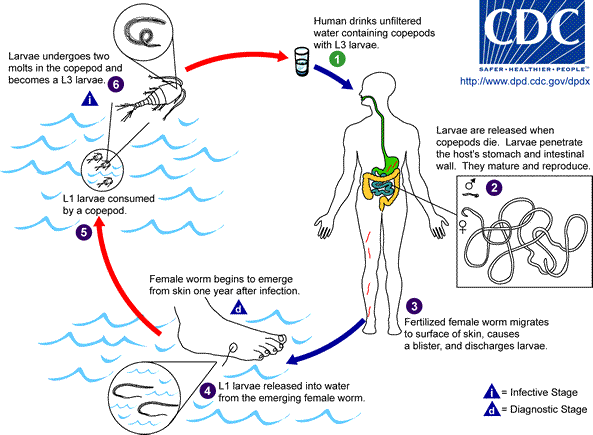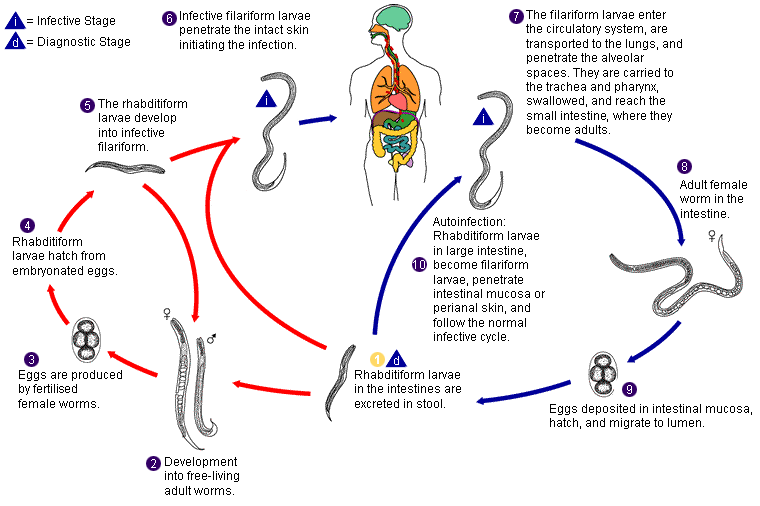Pinworm Life Cycle

Pinworm life cycle begins with infection.
Pinworm life cycle. Pinworm infection begins when the eggs of pinworm enter the mouth. The adult life span is about two months. The eggs hatch in the duodenum first part of the small intestine.
The life cycle of a pinworm usually requires a period of 15 to 43 days. Adults of a worm cannot live outside the hosts organism and immediately die in the environment. Pinworms are transmitted through fecal-oral contact ingestion of embryonated eggs.
The emerging pinworm larvae grow rapidly to a size of 140 to 150 micrometres and migrate through the small intestine towards the colon. The entire life cycle from egg to adult takes place in the human gastrointestinal tract of a single host from about 24 weeks or about 48 weeks. A pinworm infection causes disturbed sleeping patterns rash or skin irritation and abdominal pain.
The larvae then moult twice to become adult worms while moving through the other parts of the small and large. At full maturity adult females measure 8 to 13 mm and adult males 2 to 5 mm. The larvae contained inside the eggs develop the eggs become infective in 4 to 6 hours under optimal conditions.
Pinworms generally live for up to 13 weeks. Eggs of pinworms tend to be sticky and long-lived and so may persist in the environment. Eggs are deposited on perianal folds 1.
The disease begins with the ingestion of parasite eggs. After that timeframe female pinworms crawl downward and out of the anus for the sole purpose of laying thousands of microscopic eggs. Transmission may also occur via fomite.












